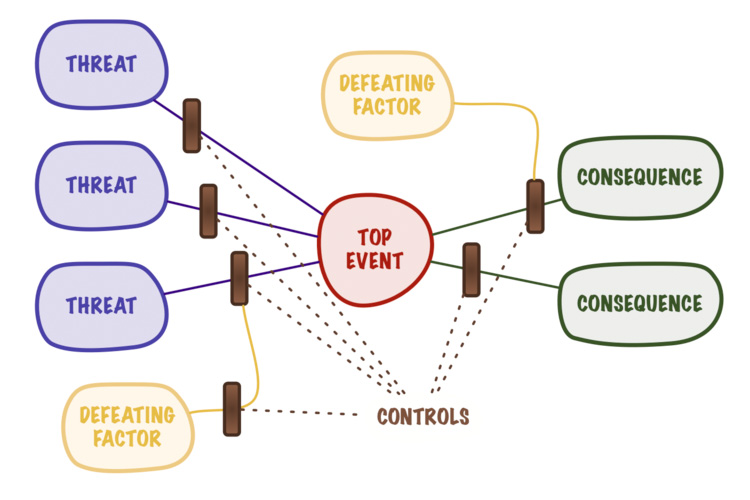
Posts about stuff relating to airports

NOTAM System Failure: Not What-If but When?
Over ten years ago, I posted a short recommendation that aerodrome operators should consider the risk of a NOTAM system failure. While even I may have considered such a thing a bit of a black swan event, this scenario recently played out in the United States and Canada. Obviously, plenty of people in the FAA and NAV Canada will be working on avoiding a repeat of these events, aerodrome operators should take the time to review want happened for their own lessons learned.

COVID-19 Bird Strike Update #3
It’s time for another update on the impact of COVID-19 traffic downturns on wildlife strikes. My first (and updated) post was looking at the initial months of the pandemic and the second looked at the northern summer period but it has been a big three months since I’ve looked at these numbers.
And in that time, someone published some statistics that don’t exactly match mine!

COVID-19 Bird Strike Update #2
It’s been a couple of months since my first attempt at tracking bird strike rates following the COVID-19 traffic downturn. At that time, viral infection rates in Europe had settled down, Australia was coming down from its second wave and even the US seemed to be cresting its second phase. On the aviation safety front, bird strike rates were showing a pretty clear sign of exceeding the 5-year average.
So how are things looking three months on?
Image credit: Alan Wilson (via Wikipedia)

ASW #4: (More than) A Couple of Words on Safety Management Systems (TBT)
Here we are on day 4 of Airport Safety Week and it’s a Thursday, so I am going to cheat a little here and do a massive Throwback Thursday post covering some of my favourite Safety Management System (SMS) related posts.
Image credit: Digital Buggu (via Pexels)

Better Safety Risk Management: Uncertainty & Decisions
A lot of us have been doing aerodrome safety risk management for a while now. In that time, I’ve made a lot of mistakes and that means, hopefully, that I have learned a bit about risk management. So, I’d like to share some of my best lessons from being a regulator and practitioner of safety risk management over that time.
Image credit: Taryn Elliot via Pexels

Blown Away: Risk Management & Public Safety
As an avgeek, I love pictures and videos of aircraft coming into land low over beaches, roads and anything else that happens to be near the end of runways. But should we continue to accept injuries to and the death of people who congregate in these areas during aircraft operations?
Image credit: Richie Diesterheft

Wildlife Risk Management Series
A long time ago I wrote a rather comprehensive series on wildlife hazard management within an ISO 31000 risk management framework. It was the launch series for the New Airport Insider website and quite a bit of work on my part - but I enjoyed it. So, I thought I would repackage it as a quick blog post with links to each article.

Seussian Safety Management
All three on my children have been brought into the world of reading partially through the works of Dr Seuss. I can't count the number of times I have read his books. As my kids have grown older, they have turned into the reader and read these amazing books back to me.
The Bike Lesson is one of my favourites for the very nerdy reason that towards the end of the book The Berenstains provide us with a short & succinct definition of safety. It's three simple stanzas that I think encapsulate modern safety management perfectly.

Talking Taxiway Safety....Again
Okay, I'm going to claim, tongue-in-cheek, that I told you so. Two years ago, I suggested that the next global initiative should be Taxiway Safety. While Runway Safety was getting and continues to get its due attention, there had been a spate of ground collisions involving large jets at US Airports.
Image credit - (cc) Doug Letterman

Setting the Standard
This is me coming up for breath. I've been in the deep-end of airport operations for the last 10 months or so and I'm only just getting my head above water. I think (or at least hope) I've achieved a lot over the last couple of months but very little has been blog-worthy. However, over the last week or so, I've been swimming in that lovely little pool called Wildlife Hazard Management. And while I was re-writing my airport's Wildlife Hazard Management Plan, I stumbled across something I thought worthy of a share.

Unnecessary Segregation or Pragmatic Isolation?
I've been out in the "real" world for the past six months or so and in that time, my thinking on risk management has changed a little bit. So here it comes, a confession... I have being using a PIG recently and I have felt its use has probably helped with effective management of overall risk.

BTIII: Assessing Uncertainty
I can't lie to you. I have been turning myself inside out trying to get a handle on risk evaluation in the aviation safety sphere for close to five years now and I still don't feel any closer to an answer. And I say "an" answer and not "the" answer. Since you are always assessing risk in terms of your objectives, there can and will be multiple approaches to assessing the risk of the same scenario depending on whether you are considering your safety, financial or legal objectives.

Kaboom!
A long time ago I blogged about the risk posed by unexploded ordnance. Well, last week Schiphol Airport in the Netherlands had to deal with that very problem.
Check out the video here…

Integrating Runway Safety Teams with your Safety Management System
I've just spent an amazing week in Bali1 workshopping with operators and regulators from the Asia-Pacific region (and some from further afield) on the issue of runway safety. We got a lot of good information from the Flight Safety Foundation, ICAO and COSCAP as well as airlines, airports and regional regulators. The primary objective of the week was to provide information on and practice in the establishment and conduct of Local Runway Safety Teams (LRSTs). To this end, the seminars and workshop were great but I left feeling like one connection had been missed. The final question on my mind and many others, I am sure, was:
How do these runway safety initiatives integrate into my SMS?
Image: Agência Brasil

Levels. Levels? Yeah...
Seinfeld fans may remember this short exchange. Kramer might have been on to something and it had nothing to do with interior design. In my research and work, I've been butting up against a few theoretical roadblocks. But I am starting to think that these roadblocks are actually different levels. Internet guru*, Merlin Mann often observes that people need to solve the right problem at the right level. And now, I'm starting to think that is exactly what I need to do.

As Low As Reasonably Practicable
It's another staple of the risk management diet but while I believe this one to be a completely valid concept, I can't help to feel that its being served up underdone. This time I'm talking about ALARP - As Low As Reasonably Practicable. To define ALARP, at least how I do, would probably negate the need to write the rest of this post. So let's just say that ALARP is the point at which any further reduction in risk would require resources significantly greater than the magnitude in the benefit gained*.
Image credit: Sam Willis (via Pexels)

On the Shoulders of Giants
I can't rule out that I had already viewed this presentation and the words pathways and proximal became lodged in my mind - seeds sown to sprout some distant day in the future. But upon reading this document (again?) I was struck by the apparent similarities with my proposed risk evaluation methodology, which was the subject of much ranting a few weeks ago - here, here, here, here and here.
Find out what presentation by reading on…

Wrapping Up PIGs .... For Now
Since I don't just want to be thought of as some PIG-hating obsessive lunatic, lets wrap this thread up for the moment. Quick recap: The traditional likelihood-consequence matrix (PIG - see original post) is not particularly useful when dealing with aviation safety. Why? Because a graduated consequence scale fails to recognise the perilous nature of aviation and consequence as a dimension isn't particularly useful when evaluating latent conditions remote from the ultimate outcome (death by aviation).
Alternate approach: Instead of scoring the consequence directly, I've offered two alternative dimensions under the generic title of influence1 - proximity and pathways.
In wrapping this up, I thought I would discuss what I think is the rationale behind this approach of using slightly off-centre indicators.

Influential Behaviour
Near the end of my last post, I used the Swiss-cheese model to highlight that many risk conditions1 worthy of attention are not necessarily proximate to the ultimate outcome. I also hinted in the post before that, that I thought this to be only half the story. To tell this story, let me introduce another accident causation modelling technique. It is called an AcciMap and it is gaining popularity because it offers a way of representing the relationships between events (these being things such as decisions, functions, tasks, actions, etc.). An AcciMap is set up in two dimensions with vertical lanes separating system levels of increasing generality as you move up and the horizontal axis having no fixed dimension or scale. The system levels begin very specific to the accident in question with equipment and actor activities making up the first two levels. The higher levels relate to organisational, regulatory authority and government policy and decision making.

One Step Back...
In continuing this little series I've got going here, I'd like to just quickly go back over a couple of points from last time. I'm trying to keep these posts relatively short. So that means I may have moved on to my next point a little too quickly. I guess the crux of the last post was that a graduated consequence scale is inappropriate in an aviation safety context. My two main points to back up that statement were:
the potential for a catastrophic event is persistent to the primary aviation activity of flying from A to B; and
that given aviation is a complex socio-technical system, risk conditions (call them hazards, events, or even just risks) upstream of the ultimate condition (death by aviation) cannot be categorised effectively.
I tried a few of these arguments out on some colleagues and they seemed unconvinced. So, I'm going to work on them a bit more here - this blogging thing is much more for my benefit than yours but thanks for stopping by anyway ;).
One step back...
